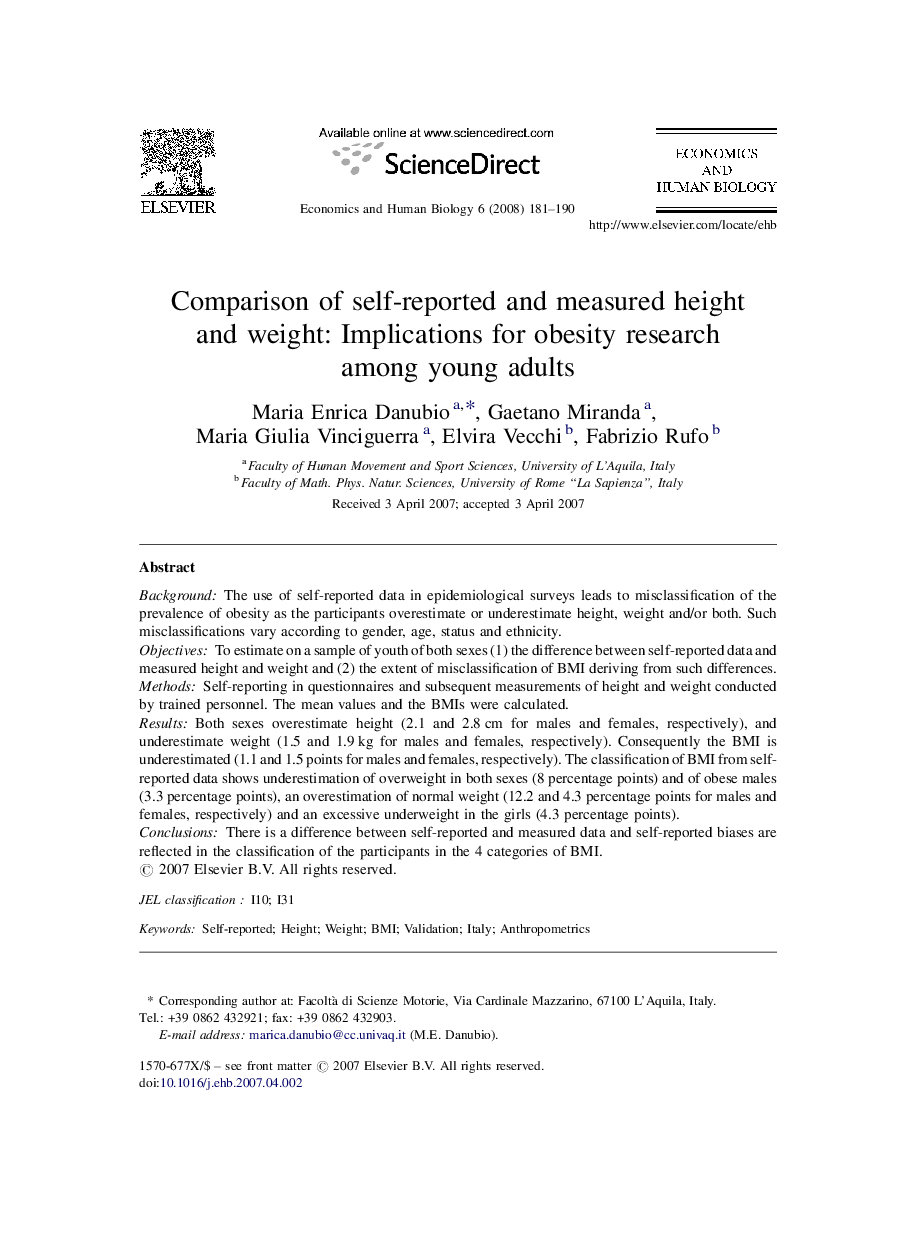| Article ID | Journal | Published Year | Pages | File Type |
|---|---|---|---|---|
| 5057319 | Economics & Human Biology | 2008 | 10 Pages |
BackgroundThe use of self-reported data in epidemiological surveys leads to misclassification of the prevalence of obesity as the participants overestimate or underestimate height, weight and/or both. Such misclassifications vary according to gender, age, status and ethnicity.ObjectivesTo estimate on a sample of youth of both sexes (1) the difference between self-reported data and measured height and weight and (2) the extent of misclassification of BMI deriving from such differences.MethodsSelf-reporting in questionnaires and subsequent measurements of height and weight conducted by trained personnel. The mean values and the BMIs were calculated.ResultsBoth sexes overestimate height (2.1 and 2.8Â cm for males and females, respectively), and underestimate weight (1.5 and 1.9Â kg for males and females, respectively). Consequently the BMI is underestimated (1.1 and 1.5 points for males and females, respectively). The classification of BMI from self-reported data shows underestimation of overweight in both sexes (8 percentage points) and of obese males (3.3 percentage points), an overestimation of normal weight (12.2 and 4.3 percentage points for males and females, respectively) and an excessive underweight in the girls (4.3 percentage points).ConclusionsThere is a difference between self-reported and measured data and self-reported biases are reflected in the classification of the participants in the 4 categories of BMI.
